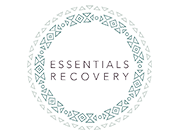Naloxone is a medication capable of counteracting the effects of an opioid overdose. It is typically administered via injection, but can also be given by inhalation or intranasally. Naloxone has been in use since the 1960’s and over time has saved many lives. But with fentanyl dramatically increasing the number of overdoses in recent years, more people are pushing to get naloxone in the hands of people likely to encounter an overdose victim. Unfortunately, this includes many heroin users themselves, who are getting clean needles and testing their drugs for fentanyl before consuming them. Here is a list of who should carry Naloxone:
Friends and Family of People who use Opioids:
People who inject opioids are most likely to be the ones overdosing, but friends and family of opioid users should also consider carrying Naloxone. In addition to protecting people they care about from an overdose, it will also protect them from a charge of murder or manslaughter in case their loved one overdoses on purpose.
Emergency Medical Services:
EMS workers are the first people on the scene of a medical emergency, and as such they can save lives with Naloxone. Despite being some of the first responders for 911 calls, EMS workers frequently do not carry naloxone because of laws or procedures that forbid it. EMS employees should be carrying naloxone to treat overdoses they encounter in the field.
Paramedics:
Paramedics are trained medical responders who should be carrying naloxone to treat opioid overdoses. While it is possible for an untrained bystander to save someone using Naloxone, it is much more difficult and the success rate is significantly lower than what paramedics can achieve. Bystanders can safely provide rescue breathing while paramedics inject Naloxone into the victim’s body. If bystanders want to use naloxone themselves or take training that allows them to legally dispense Naloxone without a prescription, that’s great! Everyone with a chance of coming into contact with an opioid overdose should have access to naloxone, but as emergency first responders paramedics have the skills and equipment to successfully treat an opioid overdose.
Emergency Department Staff:
People brought to the emergency department after an opioid overdose are at risk of suffering another overdose due to physiological changes that happen when the patient is revived. Emergency department staff should check for, and treat any overdoses in their care. This includes people admitted for other reasons or discharged home who return with prolonged symptoms including sleepiness, nausea, vomiting, or agitation; all signs of a possible relapse triggered by naloxone given during their initial treatment.
New Drug Users:
Just like anyone else who uses opioids, new drug users frequently have little experience with them due to strict supply from unreliable sources. Talking someone through using safely can be incredibly difficult if they slip into an overdose while you are there to watch them. Naloxone kits provide peace of mind to new drug users that they have a way to get themselves out of trouble if things go wrong, without worrying about being charged with trafficking or manslaughter if their drugs are laced.
LGBTQ+ People:
Opioid overdoses are least likely to be reversed in transgender people due to physiological changes caused by long term hormonal therapy. This combined with the high number of LGBTQ+ people self-medicating for depression or anxiety makes opioid use more common within this community, and so they need naloxone protection just like anyone else.
People With Comorbid Mental Health Disorders:
Opioid use is most common among people with mental health disorders, and so it stands to reason that any one of them may need naloxone at some point. Being aware of opioid overdose signs and having access to Naloxone kits protects their loved ones from the legal consequences of using opioids despite knowing they carry a risk of death.
People Who Use Opioids Without Prescription:
It’s already legal for anyone to possess naloxone without prescription, but this article is written from the perspective of who should carry it as many places as possible to help us improve our chances of living long enough to get clean. This means distributing naloxone kits to people who use opioids without prescription so they can save their own lives or the life of someone they care about. In conclusion, everyone who carries an opioid overdose risk should have access to naloxone. Some people are more at risk than others so it’s a good idea for these people to carry Naloxone kits wherever they go, but this article mainly focuses on people who have a duty of care to carry naloxone kits to save lives. Call us at 772-266-5320.


